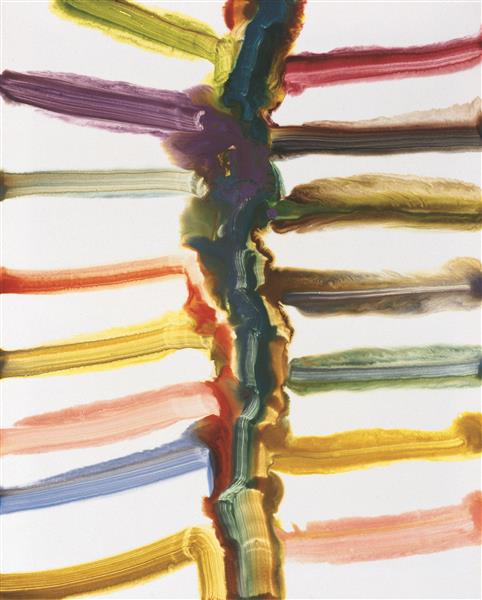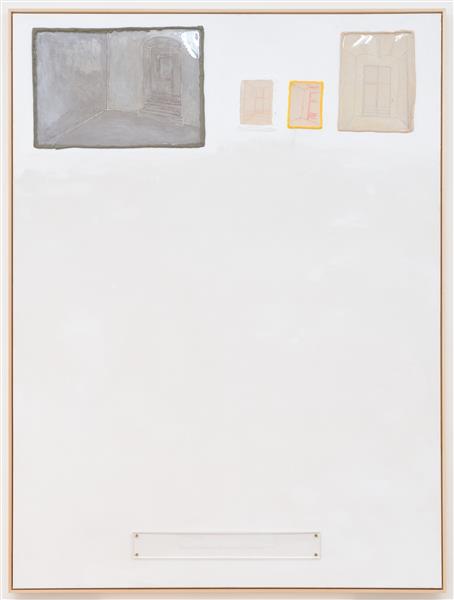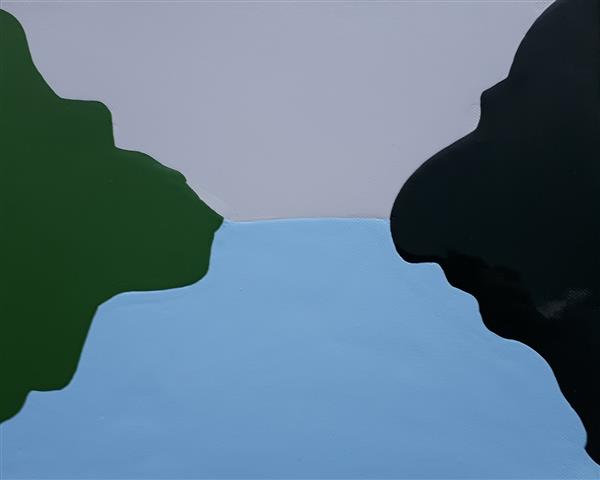Échantillon
Bernard Frize
acrylic and resin on canvas
100 × 81 cm
1998
Acquisition 2001
Inv. No. 0086
Bernard Frize experiments as a painter with technique, materiality and colouring. He has developed a “language of reality”, one of the most important positions in current painting. A trace of non-linearity runs through the work of the artist which, on the one hand, can be explained by the non-chronological work process while on the other, as a sign of fundamental irrationality. According to Frize in a 2002 interview, this irrationality is the result of a mixing of subjective sense impressions with the real world. This ambivalence between everyday and personal perception is made concrete in painting, and finds its expression there. In the process, the artist makes references to philosophical and ethnological sources such as Austin, Quine, Cavell or Falguières. There is also a special form of discursive engagement with the work of Claude Lévi-Strauss; this structuralist attempted to link language, thought, culture and creativity on the basis of generally valid laws of thought. And the artist, Frize, also often succeeds in revealing grids in the perceptive structures of human ways of seeing, as with Échantillon (test, sample).
Hans Ulrich Obrist, 2005 (translation: Tim Sharp)
Continue readingExhibitions
Nach Rokytník. The collection of EVN, MUMOK, Vienna, 2005
Publications
evn sammlung 95–05, Cologne 2005, p. 106 f
evn sammlung. Ankäufe 2000–2002, Maria Enzersdorf 2002, p. 18
Bernard Frize. Size Matters [Carré d’Art, Musée d’Art Contemporain des Nîmes, 19.6.1999 – 26.9.1999, Museum Moderner Kunst Stiftung Ludwig Wien, 22.10.1999 – 28.11.1999 ...], Nîmes 1999, p. 162


